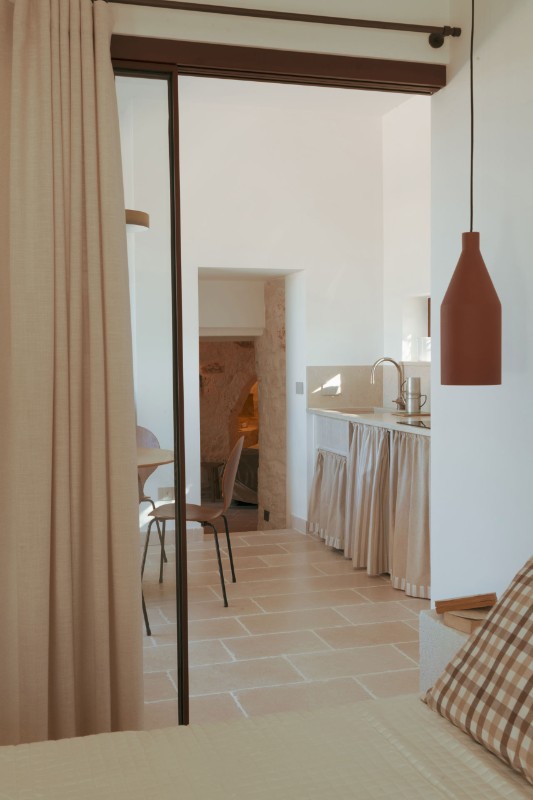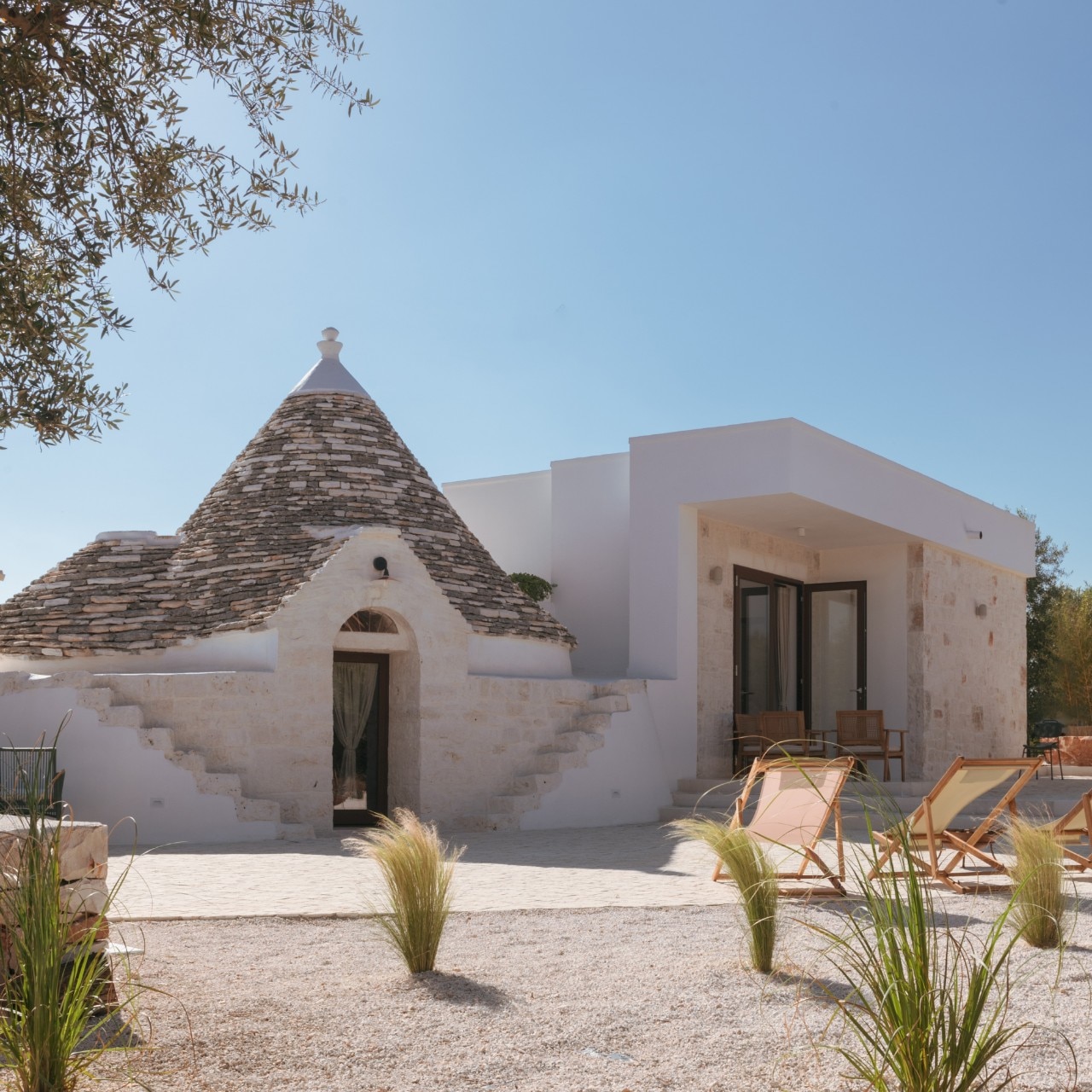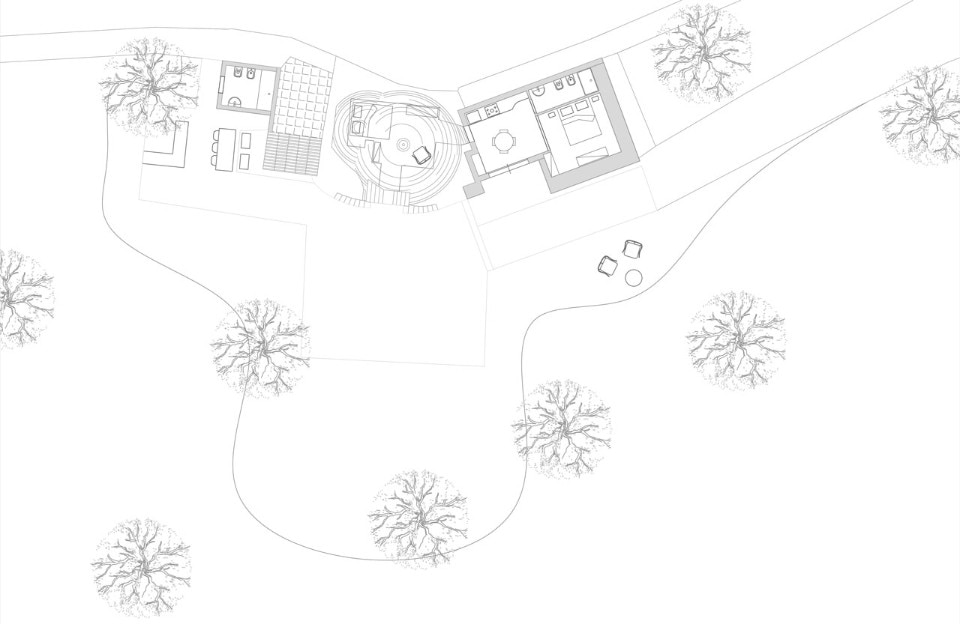Since Giuseppe Pagano and Guarniero Daniel featured a variation of the ancient Apulian trullo on the cover of the catalog for the renowned 6th Triennale of Milan, this architecture — spontaneous long before Rudofsky coined it as anonymous or “without architects” — has captivated the curiosity and passion of countless designers, anthropologists, and scholars alike.
Their forms, the alphabet of constructive ingenuity they embody, the interiors they recreate, and the materials from which they are made hint at a new way of experiencing contemporary life. It is a way embraced by those who, as in the case of this vacation home, choose to temporarily detach themselves from the relentless—and often frivolous—stimuli of daily routines to rediscover a sense of time and space that, though seemingly lost, remains profoundly regenerative.

This thematic thread seems to guide Studio Sospeso in the design of Trullo Otium: a holiday residence that not only reflects on the necessary time for the “useless” or for leisure (otium in Latin) but also broadens its meaning to encompass rhythms and activities aligned with the concept of well-being as both a physical and mental state. Rather than filling every available moment, it defends the spaces and times for walking, reading, meditation, physical exercise, and social conviviality, as the designers affirm.
The trullo itself is nestled between two geometric volumes characterized by the classic whitewashed surfaces of Mediterranean architecture and the prominent use of locally sourced stone, left with a rough finish. This stonework extends to the outdoor flooring, reinforcing a sense of material continuity.
The interiors, on the other hand, highlight contrasts: the rough texture of the stone walls, dramatized by carefully selected lighting; the smoothness of the plaster; the softness of linen fabrics; and the glossy brilliance of ceramic finishes in the bathrooms. The furnishings — combining reclaimed pieces with original selections — enhance the symbiotic narrative between folklore and simplicity, offering a cathartic escape from the complexities of everyday life.























